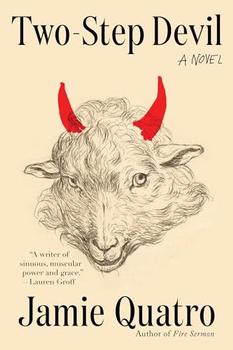Book Club Discussion Questions
Want to participate in our book club? Join BookBrowse and get free books to discuss!
Please be aware that this discussion guide will contain spoilers!
-
Two-Step Devil is set in Lookout Mountain, Alabama, where the Prophet lives in a remote cabin on the fringes of society. The novel incorporates elements of Southern Gothic literature, a writing style with various overlapping themes such as isolation, marginalization, violence, decay, macabre, and fantastic incidents. Explore how these themes are portrayed throughout the novel and their impact on the characters' lives.
-
In Two-Step Devil, the story is initially told from the point of view of the Prophet before switching to the perspectives of Michael and Two-Step later in the novel. Analyze how this change in narration affects your understanding of events and characters. Consider the reliability of each narrator and provide reasons for your answers. Which of these three voices did you most enjoy reading?
-
In 1964, the Prophet sees his first vision, "One by one the people reached the edge of the bridge and stepped off" (p. 101). However, his tormentor, Two-Step, doesn't appear until 2000. Why do you think Two-Step shows up so many years after the visions began? Additionally, why do you suppose ten years pass before the Prophet has another vision? Consider whether Quatro wants the reader to believe the prophecies are authentic or a result of mental illness, as Zeke believes. Did you recognize any of the events from the visions? If so, which ones?
-
After his father is diagnosed with cancer, Zeke tells him, "I can't take care of you" (p. 53). Take a closer look at what Quatro may be saying about the complex relationship between a father and son. Discuss how the novel explores the concept of family and consider how the Prophet's estrangement from Zeke strengthens his connection with Michael.
-
Throughout the novel, the Prophet's cabin functions as a kind of character and plays a crucial role in establishing a sense of place. Discuss how this helps readers connect with the story on a deeper level.
-
"She's named after an angel, Jessamine said. The most powerful angel in the Bible" (p. 179). In scripture, Michael the Archangel protects God's people from the devil. Consider who, if anyone, Michael is protecting in the story, and provide examples to support your answers. How would you characterize the friendship between the Prophet and Michael? Do you agree that she's a messenger sent by God?
-
Consider how the novel challenges your perception of trauma and how the characters process their grief and pain.
-
The Prophet is a self-taught artist who starts sketching in a Bible for the first time after the visions start. Discuss how the paintings depicted throughout the novel redefined your understanding of art. Did you consider the Prophet to be an artist? Why or why not?
-
Consider the use of devil figures in Southern Gothic literature and the impact it has on the reading experience. When the Prophet is introduced to Two-Step Devil, Two-Step says, "Hostile as I may appear to you, I remain a servant of the divine" (p. 205). Did this encounter change your perception of what the devil represents? Furthermore, do you think readers are meant to interpret the visitor as the biblical devil?
-
"Left a note on the counter, best not to read" (p. 162). Analyze the impact of Michael's mother's death on her life. Reflect on how death can shape and influence memories and how we approach the past. Based on the novel, what can be surmised about Michael's relationship with her mother? Analyze how Michael copes with her mother's absence.
-
The novel takes place in 2014, but it could easily be about the world as we currently know it. The widespread disillusionment with religion and political institutions is at an all-time high: "America was consuming itself" (p. 100). The author also provides critical commentary on the country and its people: "America's got money and power and the lie of innocence" (p. 79). Discuss how the novel depicts class and the impact of poverty on mental health and the lives of those on the margins of society.
-
In Michael's section of the novel, we are introduced to Jackson. Initially, his friendship with Michael appears to be a harmless infatuation. The repercussions of his deception—"I promise I would never do anything that would make you feel unsafe" (p. 171)—have lasting consequences. Consider Jackson's importance to the narrative and the devastating impact of his duplicity.
-
In Two-Step Devil, Quatro uses section epigraphs to give readers a clue about what themes or references might follow. Elaborate on how this literary device enhances the overall narrative.
-
The significance of donkeys is referenced several times in Two-Step Devil. One of these instances occurs during the conversation with Michael when the Prophet reveals she will deliver his end-times warnings to the White House. The donkeys seem to symbolize the different stages of Obama's presidency, such as "bouncing on the planet, celebrating," "fat with bags of troubles," and "Big-Tears" (p. 127). Share your thoughts on what the donkey represents. Why doesn't the devil attempt to stop the Prophet from telling Michael about her mission?
-
Michael's story concludes with this line: "It is not a life without dignity" (p. 262). What are your thoughts on the novel's dual endings to Michael's journey? Were you surprised by the character's fate? Explain your answers and consider how you might have written the ending. Discuss which version of Michael's life feels more realistic and faithful to the character.
Unless otherwise stated, this discussion guide is reprinted with the permission of Grove Press. Any page references refer to a USA edition of the book, usually the trade paperback version, and may vary in other editions.
